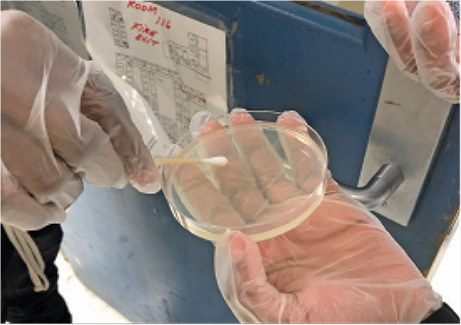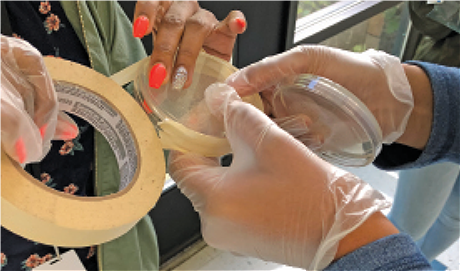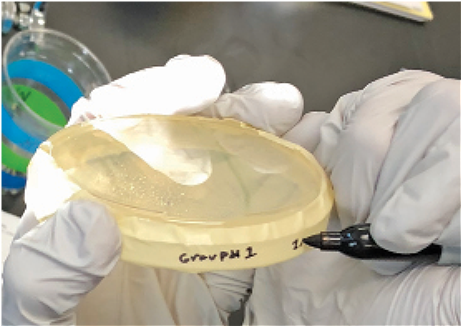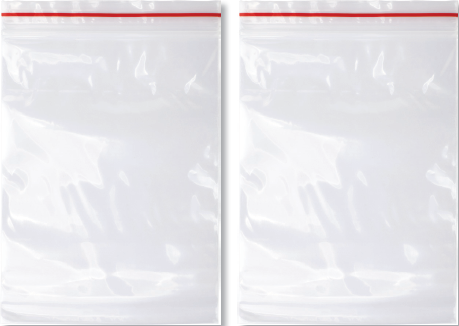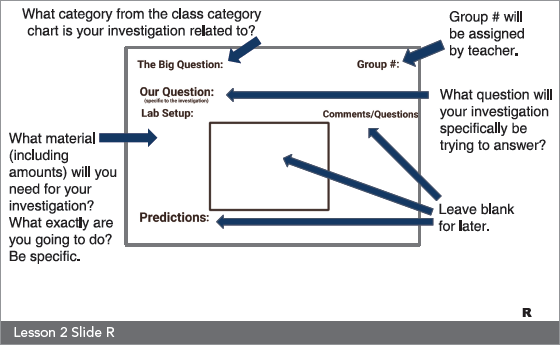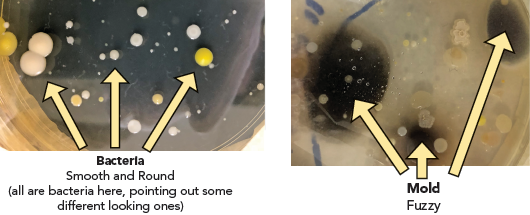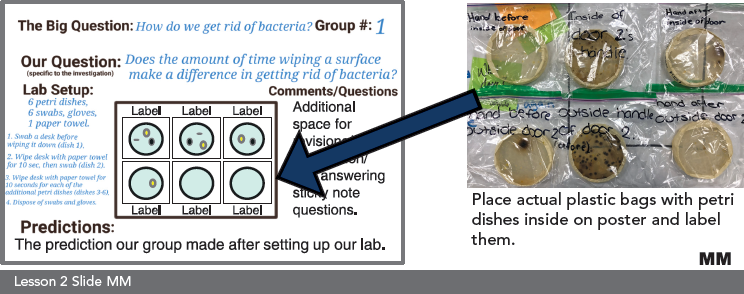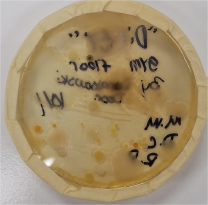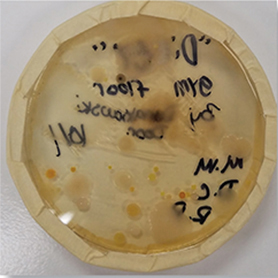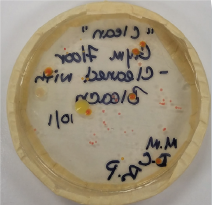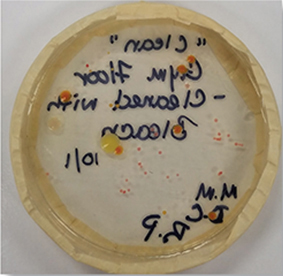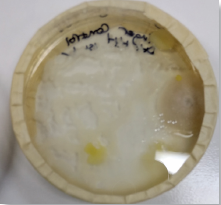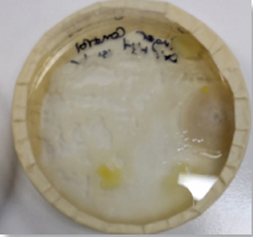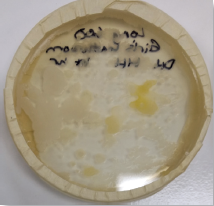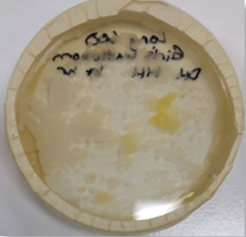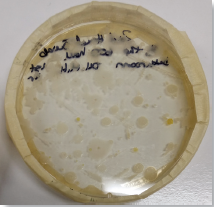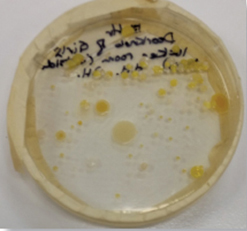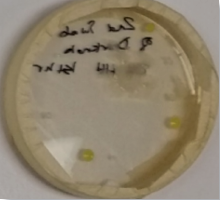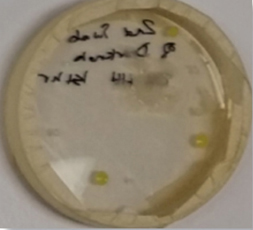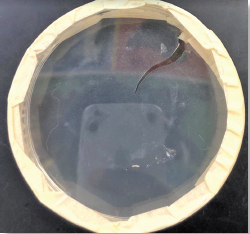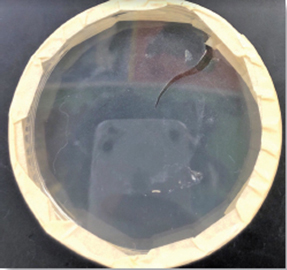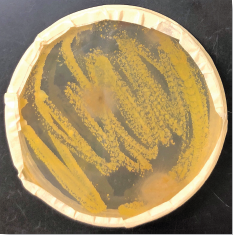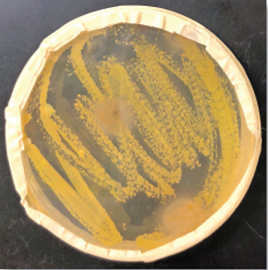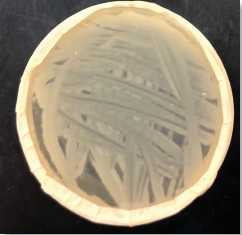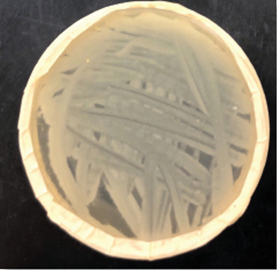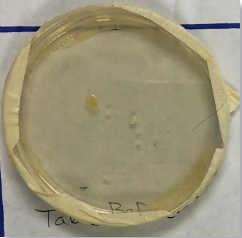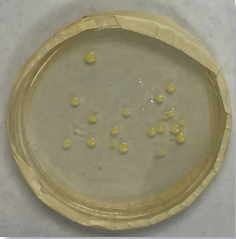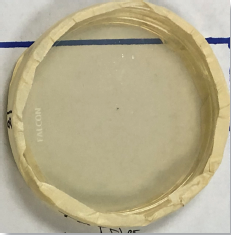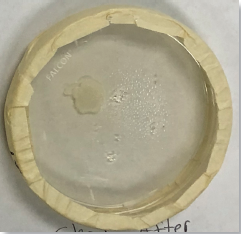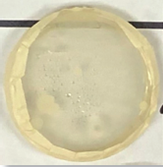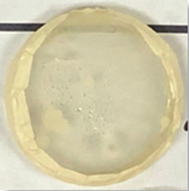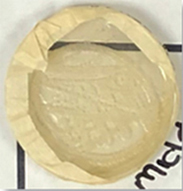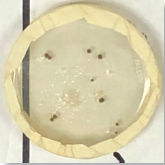CHAPTER 1
LESSON 2 What are bacteria and where are they?
WHAT DO WE WANT TO KNOW?
ON YOUR OWN 
1.On a new page in your science notebook, write the date and “Lesson 2.”
WITH YOUR CLASS 
2.Review the Driving Question Board (DQB) you helped create in the last class. Consider:
a.What did we notice about all of the cases we looked at in the last lesson?
b.What did we notice about the questions our class came up with?
ON YOUR OWN 
3.Get a copy of the typed class list of the bacteria-related questions from the DQB.
a.Read through the questions.
b.Mark the questions that relate to each other.
c.Create category names that summarize these related questions and write them in your science notebook.
d.Organize the typed questions by number under each of your categories.
Category 1 |
Category 2 |
Category 3 |
Category 4 |
|---|---|---|---|
1,3,5 |
2 |
4,7,8 |
9,10 |
|
|
|
|
|
|
|
|
|
|
|
|
|
|
|
|
|
|
|
|
How to organize your categories and questions in your science notebook.
TURN AND TALK 
4.Share your list of categories and which questions you organized under them with your partner.
a.How similar or different were your categories and question arrangement?
b.Justify why you chose the categories you did.
WITH YOUR CLASS 
5.Discuss with your class patterns you noticed about the categories and questions.
6.Participate in creating a Class Category Chart.
7.Decide as a class on the question we want to investigate next. Record this question on the page you started in your science notebook for Lesson 2.
CONSIDER POTENTIAL INVESTIGATIONS
WITH YOUR CLASS 
8.Discuss with your class if you have ever caught a small creature and what you used to catch it and keep it alive.
9.Discuss how safety is important when investigating with lab equipment.
10.Watch your teacher as they demonstrate the steps for collecting samples safely.
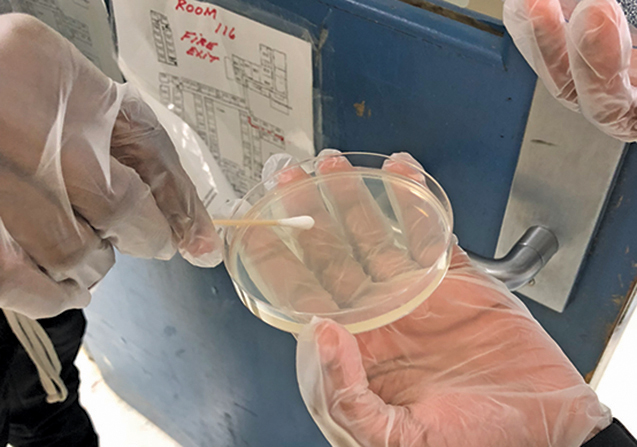
A student wearing gloves and safely sealing the petri dish with masking tape so it will not open up.
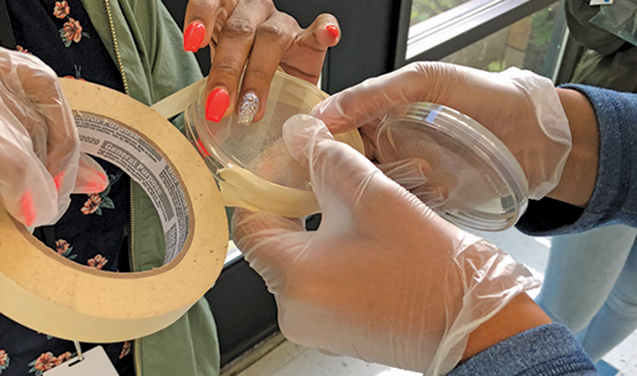
A student wearing gloves and safely marking the sealed up and taped petri dish with their group number and identification of the sample.
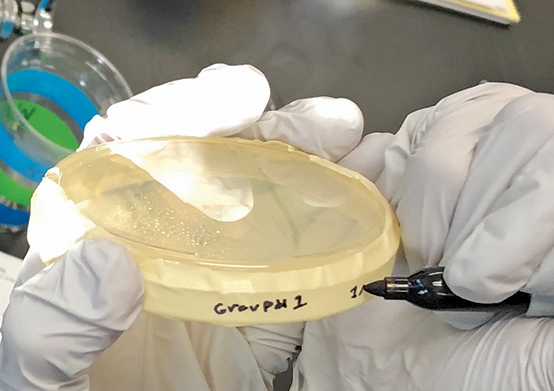
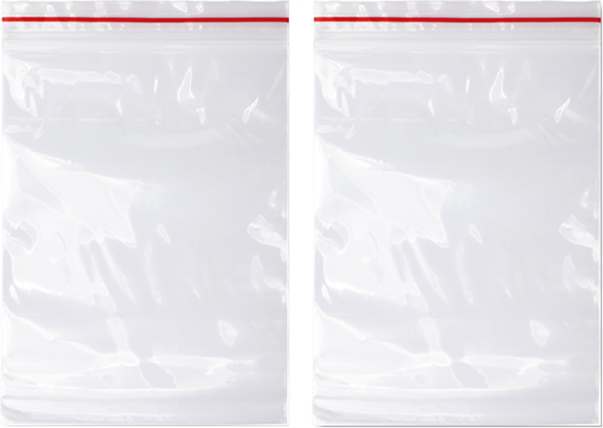
WITH YOUR PARTNER 
11.When invited by your teacher, one person gathers the practice lab materials. Take turns demonstrating to each other safe lab technique.
CONSIDER POSSIBLE INVESTIGATIONS
TURN AND TALK 
12.Discuss which categories might be investigated in class using the materials available.
WITH YOUR CLASS 
13.Discuss with your class what decisions need to be made to carry out investigations in the classroom.
DESIGN OUR INVESTIGATIONS
WITH YOUR GROUP 
14.Open Student Sheet 1.2.A: Ideas for Investigation Plan and work with your group to complete the questions.
15.Get your teacher’s signature on your final plan.
16.Copy the template onto a poster board from your teacher. View the slide projected to see how to complete the poster.
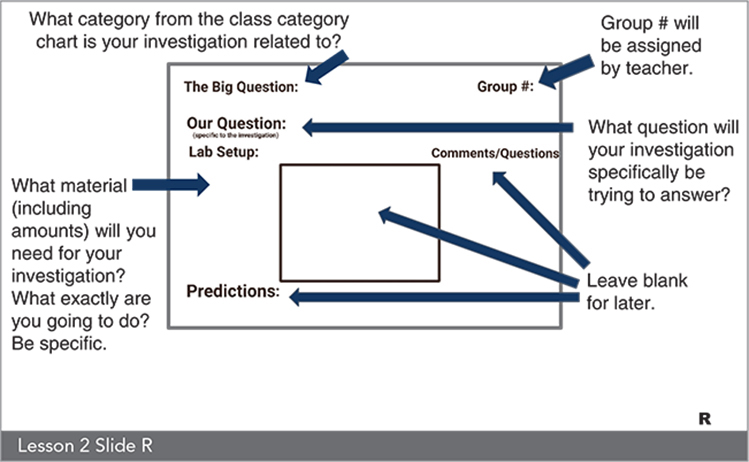
CHECK
Make sure your group …
✓Has a completed initial Ideas for Investigation Plan handout
✓Has an approval signature from the teacher
✓Has a poster with the template drawn onto it
WITH YOUR CLASS 
17.Discuss with your class the importance of feedback and how you will give feedback on each other’s investigation plans.
Type of feedback |
Examples |
|
|---|---|---|
✔ |
Suggestions related to |
“What would be gained if you tested this question at two different locations but with fewer dishes at each location following the same procedures?” |
Use of science ideas |
“How does this investigation potentially connect to the class’s big question: How do we get rid of bacteria?” |
|
Completeness/level of detail |
“In your investigation it states you’re going to wipe the desk. What does that look like? (e.g., how much force?)” |
|
Clearness of |
“Why did you choose to use increments of 10 seconds instead of increments every minute?” |
|
X |
Personal |
“It sounds like you don’t know what you’re talking about.” |
Opinion |
“I liked your investigation.” T |
|
Lesson 2 Slide T |
||
Examples of productive and unproductive feedback.
ON YOUR OWN 
18.Get 3 to 5 sticky notes. Write your initials on the back of each one.
19.Walk around the room and review other groups’ posters.
•Think about productive feedback to leave using the sticky notes.
•Write the feedback on your sticky notes.
•Leave the notes on the other groups’ posters under the Comments/Questions area.
20.Return to your poster and read the sticky notes.
21.In your science notebook, write a prediction of what you think your petri dishes will look like when you see them next.
CARRY OUT THE INVESTIGATION
WITH YOUR CLASS 
22.Watch and listen as your teacher reviews and demonstrates important procedural steps with your class.
23.Put on gloves.
24.Keep the petri dish closed right up until you are ready to add the bacteria to it.
25.When swabbing: Twist the cotton swab on the surface with the bacteria, then gently spread it on the agar over the whole plate in a pattern. (Use a pattern similar to the one shown below.)
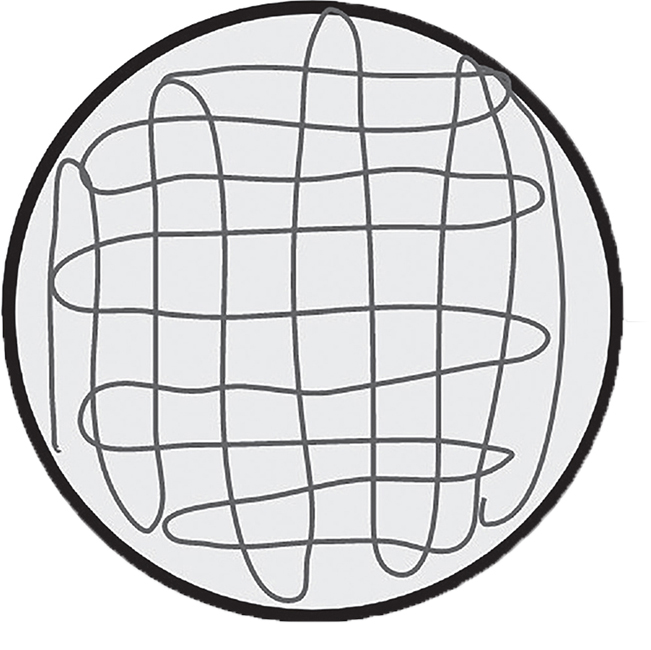
26.Review safety procedures.

SAFETY
Always keep your petri dish closed until you are ready to add bacteria to it (we don’t want to catch other things from the air in our petri dish).
WITH YOUR GROUP 
27.Get with your lab group and assign roles:
a.Who is going to swab?
b.Who is going to be responsible for keeping the petri dishes closed?
c.Who is going to tape the edges, and who is labeling?
28.Gather supplies and carry out collection. Return to the classroom.
29.Give the bags with the petri dishes to your teacher. Properly dispose of gloves and swabs.
30.Write a group prediction on your poster.
CHECK
Make sure your group …
✓Has assigned roles for the investigation
✓Followed all safety and school guidelines
✓Disposed of swabs and gloves
✓Added a group prediction to poster
WITH YOUR CLASS 
31.Discuss with your class the categories and questions investigations could not answer.
OBSERVE BACTERIA, VIRUSES, AND HUMAN CELLS
WITH YOUR CLASS 
32.Create a notice and wonder chart in your science notebook.
33.Watch the animated size scale several times. Add to your notice and wonder chart.
34.Discuss with your class how reading for science might be different.
35.Read through the Science Reading Annotation Stems with your class.
36.Set a purpose for your reading and use the sentence stem on the Student Sheet 1.2.C: Viruses and Bacteria. You will choose which article you will read.
ON YOUR OWN 
37.Choose one or two stems from the Making Connections category.
38.Read the Bacteria or Virus article marking the text and using your annotation stems in the margins.
TURN AND TALK 
39.Discuss your annotations with a partner and how you might summarize what you read.
40.Together, choose a Summarizing annotation stem. Discuss how bacteria and viruses differ.
41.In your science notebook, use your Summarizing annotation stem to create a summary about how viruses and bacteria are different.
WITH YOUR CLASS 
42.Discuss how the class can create a Word Wall for the unit.
ANALYZE OUR RESULTS
ON YOUR OWN 
43.Consider what your results might look like.
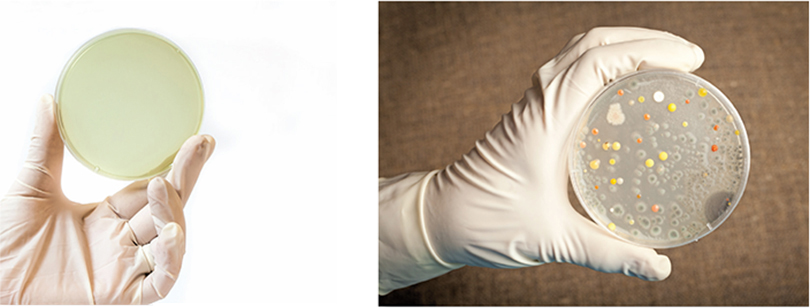
WITH YOUR CLASS 
44.Discuss with your class what kind of data you expect to collect and how you will keep track of it. Open Student Sheet 1.2.D: Lab Data Table.
45.Add ideas from the class category chart to the Lab Data Table.

SAFETY
Do not retrieve anything until you have carefully reviewed these lab safety guidelines.
46.Review lab safety procedures.
a.Goggles and gloves must be worn at all times.
b.You only need your data table and a writing utensil. Keep all other belongings away from the lab area.
c.Do not open anything. We don’t want any bacteria escaping.
d.How can you tell what you caught? Images below describe how to tell the difference between bacteria and mold.

WITH YOUR GROUP 
47.Display your petri dishes with your poster. Record your results on your Lab Data Table.

48.Move to other groups’ posters and record their results on your Lab Data Table.
CHECK
Make sure your group …
✓Placed the actual plastic bags with petri dishes inside, flat on the poster
✓Labeled the dishes
✓Recorded data for all groups in data sheets
✓Cleaned up safely!
ANALYZE OUR RESULTS (ALTERNATE)
Scenario 1
Scenario 2
|
X
|
X
|
X
|
Scenario 3
|
X
|
X
|
X
|
Scenario 4
|
X
|
X
|
|
X
|
X
|
Scenario 5
|
X
|
X
|
X
|
START OUR MODEL TRACKER
WITH YOUR CLASS 
49.Return to the beginning of your science notebook to the blank pages you put aside. Paste in the Model Tracker Self-Assessment and Feedback Tool.
50.Discuss with your class how you will set up your Model Tracker for Lesson 2.
51.Complete the entry for this lesson.
•Create a new entry for Lesson 2 and record the lesson question.
•Discuss with the class what we have figured out during this lesson. Add the key ideas to your Model Tracker.
•Decide how to represent the important ideas in a model.
REFLECT ON ASKING QUESTIONS
WITH YOUR CLASS 
52.Discuss with your class the practice of asking questions when planning and carrying out investigations.
REFLECT ON OUR INVESTIGATIONS
ON YOUR OWN 
53.Think about how your petri dishes may have changed over time.
54.In your science notebook, describe what you might see if you left the petri dishes out for a month or even a year and explain why you think that.
WHAT SHOULD WE DO NEXT?
WITH YOUR CLASS 
55.Discuss your findings as a class and reflect on our Driving Question Board. Work together to decide what we still need to know, and what we should investigate in the next lesson.
